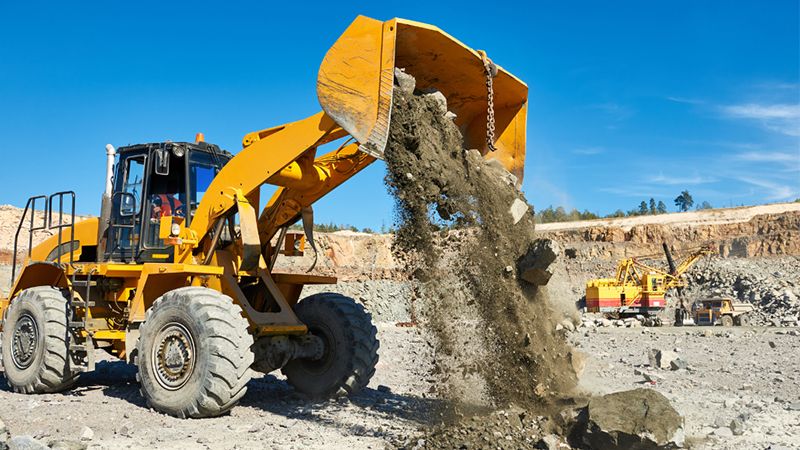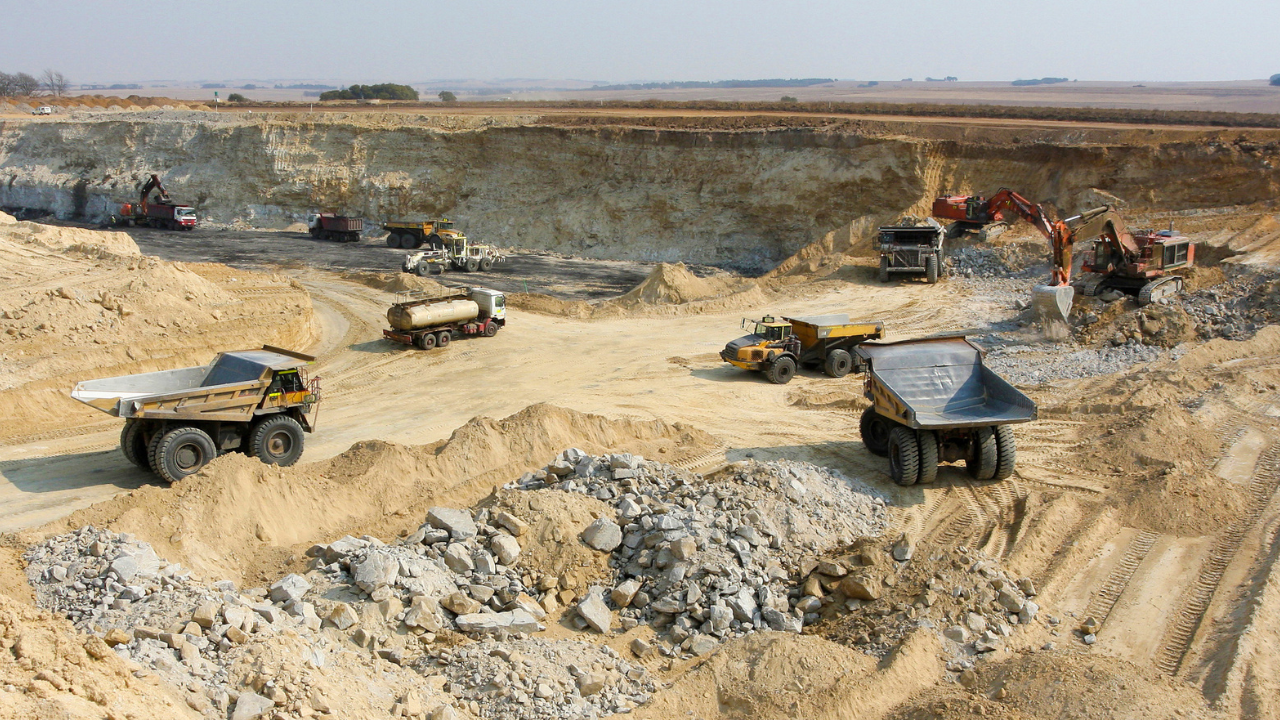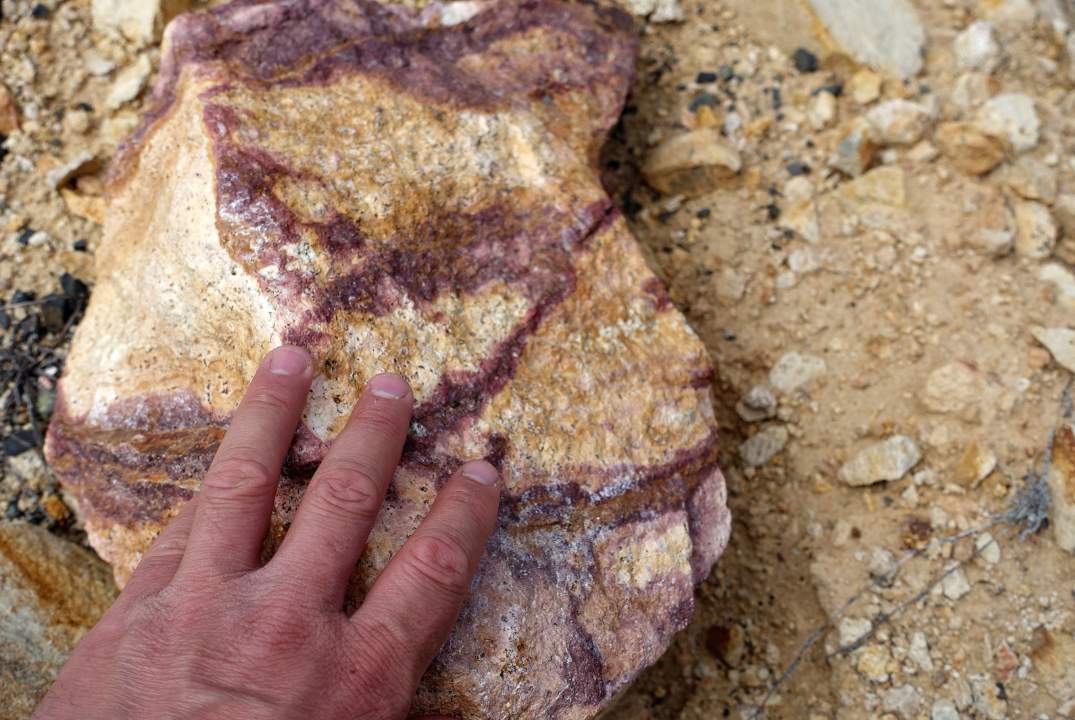How to Excavate Rock: Essential Techniques and Tools

Dealing with fractured rock or very hard rock requires selecting the right method to ensure efficient and cost-effective rock removal. Tools like Rockwheels, which provide precise cutting capabilities, are essential in this process.
RockZone Americas specializes in rock and concrete cutting attachments, including Rockwheels, Rockcrushers, and Rockscreener attachments. Our innovative solutions cater to the construction, mining, and environmental remediation sectors, making our team a trusted partner for any rock excavation project.
In this blog, you'll discover various hard rock excavation techniques, the best equipment to use, and tips for safe and effective rock removal. Let’s dive into the essentials of rock excavation and how our expertise can help you achieve success in your construction projects.
Key Takeaways
- Choose the right rock excavation method by considering project-specific factors like rock type, soil strata, and site layout.
- Mechanical methods, such as hydraulic hammers and Rockwheels, are effective alternatives to blasting for precise rock removal.
- Partnering with RockZone Americas guarantees access to expert solutions and advanced equipment for efficient and safe rock excavation.
Understanding Hard Rock Excavation
Hard rock excavation removes rock masses from a job site to make way for construction projects. This process becomes essential when the ground consists of hard rock, fractured rock, or cemented materials that standard excavating equipment can't handle.
Excavating rock depends on the rock type. Soft rock often uses simpler mechanical methods like ripping, while very hard rock requires more powerful techniques such as blasting. The presence of rock fragments and the rock's compressive strength significantly influence the chosen method.
Common challenges in hard rock excavation include variations in soil strata, depth limitations, and controlling noise, especially near residential areas or other structures.
Breaking cemented materials and drilling boreholes can be time-consuming and require specialized expertise. Managing the removal of broken rock and rock fragments also complicates the project.
Effective Methods for Hard Rock Excavation

Hard rock excavation involves various techniques to remove rock masses efficiently and safely. Depending on the type of rock, project scale, and site conditions, different methods are employed to achieve optimal results.
Here are the primary techniques used in hard rock excavation:
Drilling and blasting
Drilling and blasting involve drilling boreholes into the rock, filling them with explosives, and then detonating them to fracture the rock mass. This method is ideal for large-scale projects requiring the removal of very hard rock or significant rock masses.
Safety considerations are crucial, as improper handling of explosives can lead to severe accidents. Professional execution ensures that blasting is conducted safely and efficiently, minimizing the risk to workers and nearby structures.
Mechanical methods
Mechanical methods use heavy machinery like excavators fitted with a rock hammer and hydraulic hammer to break and remove rock.
Different types of excavators and attachments, such as rippers and rotary cutters, are employed depending on the rock type and project requirements. This technique is best suited for areas where blasting isn't feasible, such as sites in close proximity to buildings or other structures.
Hybrid methods
Hybrid methods combine drilling and blasting with mechanical techniques to achieve efficient rock removal. This approach leverages the strengths of each method, using blasting to break large rock masses and mechanical tools to handle smaller, more detailed work.
Hybrid techniques are advantageous in complex terrains or projects with varied rock types.
Alternative methods, like non-explosive demolition agents, pre-weaken the rock before using mechanical equipment to enhance efficiency and safety.
Essential Equipment for Hard Rock Excavation
Hard rock excavation requires specialized equipment larger than common tools to efficiently and effectively handle various types of rock, including fractured rock, hard rock, and very hard rock.
Here’s an overview of the essential machinery and attachments used in rock excavations:
Rock hammers and hydraulic hammers
Rock hammers and hydraulic hammers are crucial for breaking through hard rock and removing rock masses. These tools use powerful, repetitive impacts to fracture and break down the rock, making it easier to excavate and transport.
Hydraulic hammers are particularly effective for very hard rock due to their high energy output and efficiency.
Excavators with specialized attachments
Excavators are versatile machines that can be fitted with a range of attachments to suit different rock excavation needs. Specific attachments, such as rippers, rotary cutters, and rock trenchers, enhance the excavator's ability to break and remove rock efficiently.
Rippers are used for tearing through hard rock and breaking it into manageable pieces, while rotary cutters are ideal for precise cutting and shaping of rock surfaces.
Rockwheels
Rockwheels are specialized attachments that use rotating drums equipped with carbide-tipped teeth to cut through rock and concrete. These tools provide precise, efficient cutting, making them ideal for projects requiring detailed excavation and shaping of rock surfaces.
Rockwheels are particularly useful in trenching and demolition projects where accuracy is critical.
Rockcrushers
Rockcrushers are powerful machines designed to reduce large rocks into smaller, more manageable pieces. They are essential for breaking down rock masses into gravel or smaller fragments, which can then be used for construction materials or removed from the site.
Rockcrushers enhance efficiency by processing large volumes of rock quickly and effectively.
Key Considerations for Choosing Rock Excavation Methods

Choosing the right method for rock excavation hinges on several critical factors that ensure the process is efficient and effective.
Rock type: Soft rock vs. very hard rock
Soft rock can be handled with simpler mechanical methods like ripping or standard excavating equipment, requiring less power. Very hard rock demands robust techniques such as hydraulic hammers or blasting.
Understanding the rock mass, including whether it's fractured or solid, helps determine the best approach. Fractured rock, broken into smaller pieces, requires different handling compared to solid hard rock.
Soil strata considerations
Boring logs provide valuable information about the different soil types and their layers, which helps plan the excavation process.
In areas where the soil and rock are mixed, mechanical methods like ripping are effective. When the rock presence is dominant, drilling and other specialized methods are required.
Compressive strength of rock
Rocks with high compressive strength require blasting or the use of powerful excavating equipment like hydraulic hammers to break them down. The stronger the rock, the more energy and specialized tools are needed to effectively excavate it.
Job site-specific factors
The proximity of the excavation site to structures is a key consideration since blasting and other high-impact methods can cause damage or excessive noise. These cases require the use of mechanical methods or alternative techniques that minimize vibrations and noise.
The presence of slopes, depth limitations, and the overall layout of the site also play a role in choosing the best excavation strategy.
Slopes require specialized techniques and equipment to ensure stability and safety. Depth limitation demands more powerful tools and specific strategies to reach and remove rock effectively. The layout of the site, including access points and proximity to existing structures, determines the most efficient excavation strategy.
Evaluating Cost and Time in Hard Rock Excavation Projects
When planning rock excavation, understanding the cost and time factors is crucial for efficiency and budget control. Here’s how to navigate these considerations effectively:
Cost-effectiveness of different methods
Blasting is efficient for very hard rock and large-scale removal but can be expensive due to specialized equipment and explosives. Mechanical methods using excavators and hydraulic hammers are often more cost-effective for smaller projects or mixed soil and rock conditions.
Time-consuming aspects of excavation
Excavation can be time-consuming, especially with fractured or hard rock. Blasting speeds up the process but requires careful planning. Mechanical methods take longer, particularly in areas with depth limitations or complex soil strata.
Efficiency can be improved with hybrid methods combining blasting and mechanical techniques or alternative methods like non-explosive demolition agents. Specialized attachments like rockwheels and rockcrushers enhance speed and precision.
Accurate project planning and budgeting
Understand the site’s conditions, including rock and soil types and compressive strength. Budget for necessary equipment like larger excavating tools and hydraulic hammers.
Account for potential delays and additional costs related to depth limitation, noise control, and safety measures.
Role of Contractor Expertise
Experienced contractors assess project needs, considering soil strata, rock type, and site layout. They recommend the best techniques and equipment, ensuring projects stay within budget and on schedule.
Why Choose RockZone Americas for Your Excavation Needs
Rock excavation requires precision, expertise, and the right equipment to handle challenges like fractured rock, noise management, and selecting the best techniques for breaking tough materials.
At RockZone Americas, we bring over 50 years of experience to provide tailored solutions that make your rock excavation projects efficient and effective. Our cutting-edge attachments, including hydraulic hammers, rockwheels, and rockcrushers, are designed to tackle the toughest tasks.
Trust our expert team to deliver the most effective means for rock excavation, from common excavation needs to mining and tunneling projects. Partner with RockZone Americas for unmatched expertise and top-tier equipment. Call us today to discover how we can support your next project.
Summary
Effective rock excavation requires understanding the different methods and selecting the right one based on specific project factors.
Using drilling and blasting for very hard rock or mechanical methods for mixed soil and rock conditions is crucial for efficiency and cost control. Specialized equipment like hydraulic hammers, rockwheels, and rockcrushers play a vital role in ensuring successful excavation.
Choosing the appropriate method and equipment for rock excavation is an important consideration for any construction project. Consulting with experts like RockZone Americas can help you manage the complexities of rock excavation, providing tailored solutions and quality equipment to meet your needs.
Frequently Asked Questions
How to remove rock without blasting?
Rock removal without blasting can be achieved using mechanical methods, such as hydraulic hammers and larger excavating equipment. These tools break down rock through repetitive impacts and are effective means for handling various rock types.
Techniques like drilling holes and using rockwheels or rockcrushers provide precise and efficient rock excavation, especially in areas where blasting is not feasible.
What is the breaking method of rock excavation?
The breaking method of rock excavation involves using tools like hydraulic hammers, which deliver powerful, repetitive blows to fracture and break rock.
This process often includes drilling holes into the rock surface to create weak points, making it easier for the hammer to break the rock into smaller, manageable pieces. This technique is essential for handling hard and fractured rock during construction projects.
What is rock excavation?
Rock excavation is the process of removing rock masses from a job site to prepare the ground for construction or mining projects.
This involves breaking and removing rock using various methods, such as blasting, drilling, and using heavy machinery like excavators with hydraulic hammers.
What’s involved in hard rock excavation access planning in Texas?
Planning access in Texas hard rock excavation means ensuring your equipment and crew can safely reach the site, even through rugged terrain. Proper access minimizes delays, protects your machinery, and keeps everyone on the job safe and compliant with local regulations.
